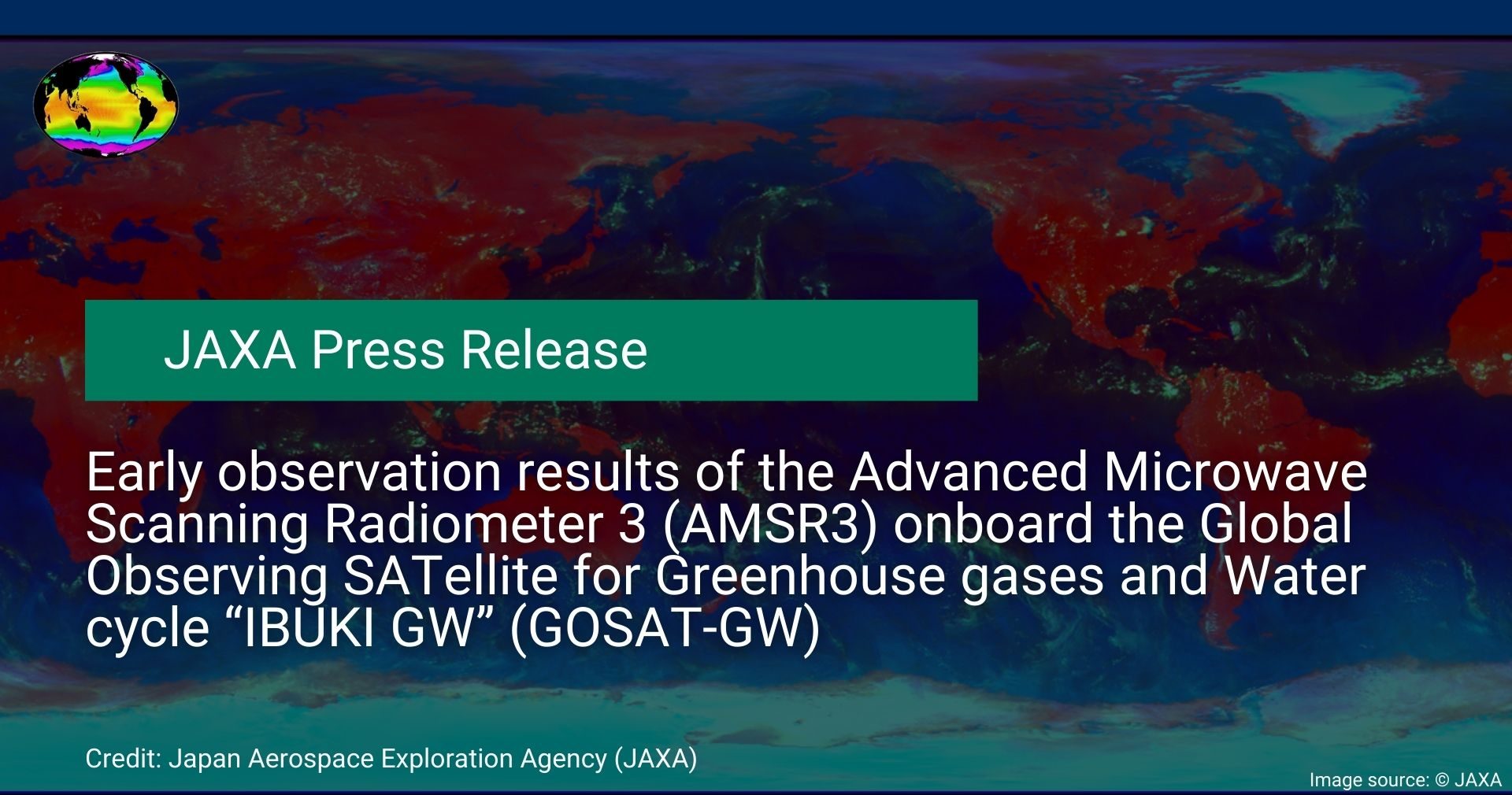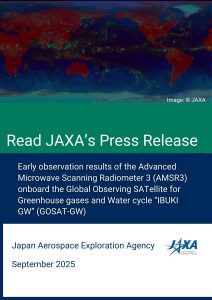
Image: © JAXA
Japan Aerospace Exploration Agency (JAXA) have announced the release of early observation results of the Advanced Microwave Scanning Radiometer 3 (AMSR3)[1], which is one of mission payloads aboard the Global Observing SATellite of Greenhouse gases and Water cycle “IBUKI GW” (GOSAT-GW)[2], successfully launched on June 29, 2025 JST (Japan Standard Time).
Click on the image or link to read the full press release, published by JAXA: https://global.jaxa.jp/press/2025/09/20250905-1_e.html
Image: © JAXA
Misako Kachi, member of the GHRSST Science Team, is Manager for GCOM-W Research, including AMSR series, at JAXA. She explains: “AMSR3 is designed to continue AMSR2 observations and expand its capability by new channels. High-frequency channels are important for snowfall retrievals and additional 10GHz channels is expected to contribute to Sea Surface Temperature (SST) retrievals. We are currently working hard to conduct initial calibration, but, even before completion of initial calibration, SST and sea ice concentration images in first lights are in good shape. We will refine algorithms and products further for data release scheduled in next June. AMSR3 SST will be also produced in GDS (GHRSST Data Specification) format for the GHRSST community.”
JAXA has also released a video of early observations, available on YouTube:
———
[1] AMSR3
AMSR3 is the is the latest sensor of the “AMSR series”, which has started from AMSR-E on board the U.S. Aqua satellite launched in 2002, to succeed “observation of water-related variables on the Earth” for more than 23 years. The AMSR series is a series of Japanese microwave radiometer that has world’s best capability by its frequent observation, higher spatial resolution by large antenna and observation channels covering low-to-high frequencies. By observing weak microwaves naturally emitted and/or scattered from the land and ocean surfaces and in the atmosphere, it can observe sea surface temperature, sea surface wind speed, precipitation, soil moisture, snow depth, sea ice concentration, etc. The AMSR series contributes to various areas by utilizing its observation data in operational applications in weather forecasting, fisheries and safety ship navigation as well as monitoring climate change, such as decreasing trend of polar sea ice extent. For more details about the AMSR series and AMSR3, please visit the AMSR web site.
[2]“IBUKI GW” (GOSAT-GW: Global Observing SATellite for Greenhouse gases and Water cycle) is an Earth observation satellite designed to monitor greenhouse gases and the global water cycle from space. The satellite is equipped with two advanced mission instruments: the Advanced Microwave Scanning Radiometer 3 (AMSR3), which observes water-related parameters such as precipitation, sea surface temperature, and sea ice; and the Total Anthropogenic and Natural emissions mapping SpectrOmeter-3 (TANSO-3), which measures greenhouse gas concentrations with high precision. These instruments enable comprehensive monitoring of Earth’s climate and environmental changes.

